Most often caused by overexposure to the sun, skin cancer is an abnormal growth of cells that can occur on any area of the body. Skin cancer, one of the most common forms of cancer, affects more than one million Americans each year. Skin cancer is usually very treatable with high cure rates as long as it is detected early. Once you have skin cancer, your chances for developing it again increase significantly, so self examinations and routine doctor visits are critical components of recovery.
Actual Patients of Advanced Dermatology & Cosmetic Care
Patient 1
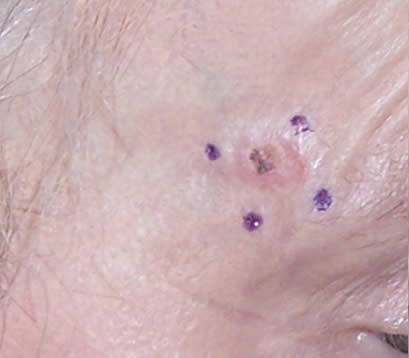
Before MOHS Surgery

Post MOHS Open Wound
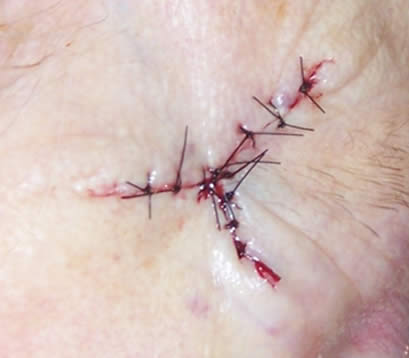
Post MOHS Wound Closure
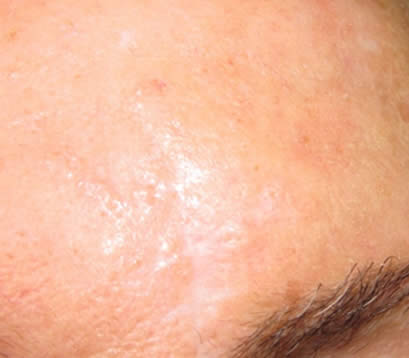
6 Months MOHS Surgery
Patient 2
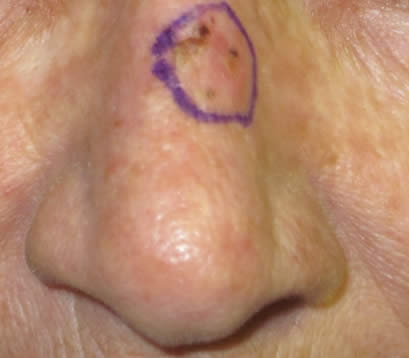
Before MOHS Surgery
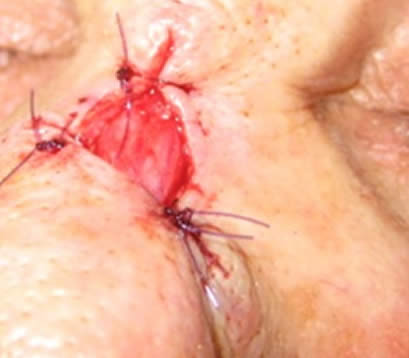
Post MOHS Open Wound
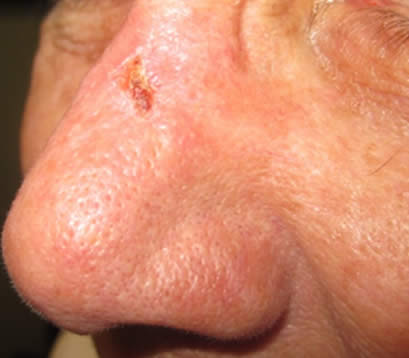
Post MOHS Wound Closure
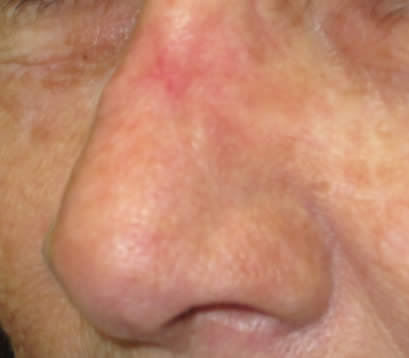
2 Months MOHS Surgery
Causes
The top layer of your skin, the epidermis, provides a protective layer of skin cells that your body continually sheds. These cells typically develop and slough off in an orderly fashion, a process controlled by DNA. When the DNA sustains damage, often from the sun, changes occur in the process and new cells can grow out of control, forming a mass of cancer cells. UVA and UVB rays produced by the sun cause the most damage to the skin, but other factors, such as heredity and toxic chemicals, can contribute to the development of skin cancer.
Symptoms
Usually skin cancer appears on the areas that receive the most sun exposure, including the scalp, face, lips, ears, neck, chest, arms, hands and legs, but it can occur in other areas. Follow the “ABCDE” rule to identify areas of skin you should have examined:
- A for asymmetry
A mole or growth that looks irregular in shape when divided equally
- B for border
Edges that look blurry, notched or jagged
- C for color
Changes in the color of a growth or mole such as darkening, spreading of color, loss of color or the appearance of multiple colors
- D for diameter
Larger than 1/4 inch in diameter or sudden, dramatic growth
- E for evolving
Watch for unusual crusting, bleeding, changes in appearance or a sore that will not heal
Treatments
If your doctor finds cancer, or precancerous cells known as actinic keratoses, therapy will depend on the depth, size, type and location of the lesions. Usually, skin cancer removal requires only a local anesthetic and can be performed as an outpatient procedure. Often removal of the affected area is all that is needed.
Treatment options include:
- Excisional surgery to cut out the cancerous tissue with a margin of healthy skin
- Freezing the lesions with liquid nitrogen
- Laser therapy to vaporize the growth
- Mohs surgery to remove larger, recurring or difficult-to-treat skin cancers
- Radiation therapy for areas where surgery is not advisable
- Chemotherapy when skin cancer spreads to other areas
Prevention
Most of the time, making smart choices can prevent skin cancer from occurring. These tips can help keep you safe:
- Apply sunscreen all year long
- Avoid the sun while taking sun-sensitizing medications
- Cover your skin with long clothes
- Do not use tanning beds or lamps
- Report any changes in your skin to the doctor
- Schedule regular skin exams
- Stay out of the sun from 10 a.m. to 4 p.m.
- Wear hats and sunglasses

